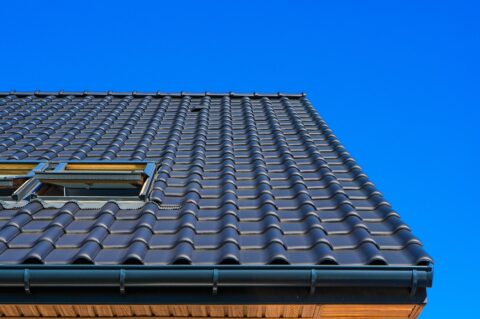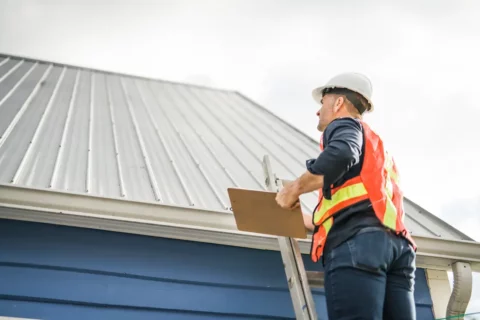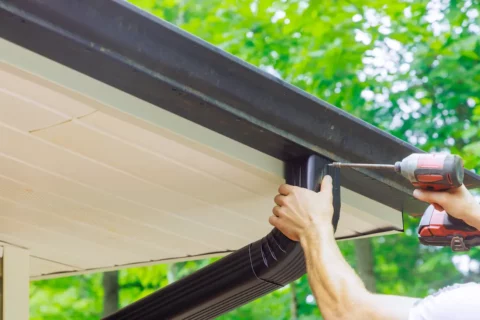
Everything You Need to Know About Roof Underlayment
Are ice dams ruining your roof with dampness and seepage? Living in Denver, your home needs extra protection against the region’s extreme weather. That’s where roof underlayment can add an extra protective layer and give you the desired piece of mind. But what is this layer, and is it worth the hassle? This blog post tells you everything you need to know about roof underlayment.
What is Roof Underlayment?
Roof underlayment is a waterproof barrier that protects your roof and walls from collecting moisture. It also provides a firm base on which the shingles can rest.
Besides resisting moisture, roof underlayment has these benefits:
- Extends your roof’s lifespan.
- Separates roofing materials from the roof deck.
- Reduces electricity bills because it improves home insulation as an added layer.
- Prevents ice dam build-up through proper water drainage.
- Minimizes damage from the UV rays in summer.
- Gives your home an aesthetic look because you cannot see the shingles anymore.
- Reduces the noise of rain and snow hitting the roof.
Most importantly, Denver’s International Building Code (IBC) requires you to install underlayment for roofing. Since it is weather-resistant, it may protect your roof from wearing down quickly.
Is Roofing Underlayment Waterproof?

No, the roofing underlayment is not waterproof. It is water-resistant, though. It means it can keep your roof safe from leakage for a considerable time. However, it cannot prevent it altogether. You may need to replace or repair your roof underlayment because it might wear and tear.
To get the most out of this material, you must invest in the strongest and longest-lasting underlayment. For example, some self-sticking types can keep water at bay for a long time.
Which is the Most Used Roof Underlayment in Denver?
Felt is the most used roof underlayment in Denver because it is well-known and the cheapest. It is also called Felt paper or Tar Paper. It is saturated in the byproducts of crude oil, which is why it can resist water.
However, it’s not the most beneficial type of underlayment. It can break easily, doesn’t last long, and isn’t completely waterproof.
What is the Alternative?
There are two alternatives: Synthetic underlayment and Rubberized Asphalt. Each has its benefits and risks.
Synthetic
It is becoming popular fast in your region because of these pros:
- It has a longer lifespan. Furthermore, it is lighter and stronger than Felt.
- Your roofer can stick some synthetic types directly to the deck without using staples.
- Synthetic underlayment is more water-resistant than Felt.
- You can get a longer warranty if you use it on your roof.
Besides its high cost, this roof underlayment doesn’t have any significant cons.
Rubberized Asphalt
It’s also called Self-adhered underlayment because it has a sticky back. The adhesive makes the decks and the underlayment more water-resistant.
It feels rubbery because it has rubber polymers. This material is specially designed for the areas where rainwater can collect on the roofs. So, it is a good option for Denver residents.
How to Choose the Right Underlayment for Roofing?
You must consider several factors to choose the right underlayment for roofing. The most important considerations are:
- Climate: Denver sees extreme weather events throughout the year. So, you must choose a sturdy underlayment to protect your house against both snow and UV rays.
- Durability: Compare how easily different materials disintegrate. Select the one with the longest expiry date.
- Roofing Material: Do you have a metal, asphalt, slate, or wooden roof? You must choose a different roof underlayment with each material.
- Budget: You will find cheap to expensive underlayments. Consider your budget, along with safety and comfort. What’s more, you must think of this expense as a long-term investment. Poor material can drain your pockets in the future.
How to Calculate Roofing Underlayment?
You can calculate roofing underlayment in a few simple steps:
- Multiply the length and width of each roof plane. This will give you the square footage measure of your roof.
- Add them all.
- Divide the answer by 100. This will tell you how many squares of underlayment you will need.
- Find out how many squares one underlayment roll will cover. It will be written on the packaging.
- Then, figure out how many rolls you must buy to cover the whole roof.
Important Consideration: Remember to include possible overlappings of the underlayment. It can happen because of your roof pitch.
An Easier Option: Call a roofing expert. They will save you from the hassle of doing everything by yourself. Also, you will get an accurate estimate without overthinking and over-buying.
How to Maintain the Underlayment Material?
You can maintain the underlayment material by doing these things:
- Check it at least twice a year: Look for tears, punctures, or holes. Make it a point to check after heavy snowfall or rain.
- Clean it regularly: Sweep leaves and other debris to prevent water accumulation.
- Keep the downspouts open: Let water flow easily and not collect for too long.
FAQs
How many layers of roof underlayment do I need?
If you live in Denver, you need one layer of roof underlayment. However, depending on the roof pitch, your roofer may advise you to add an “Ice and Water Shield.”
What is the most common material used for roof underlayment?
Felt Paper or Tar Paper is the most common material used for roof underlayment. It is well-known and cheap. Although it can resist moisture, it is not completely waterproof. Synthetic material is more water-resistant.
How long does roof underlayment last?
Roof underlayment can generally last up to 20 years. This is true of the Felt Paper material. Alternatively, Synthetic underlayment can last between 25 – 50 years. It is the better option for your permanent home.
Conclusion
Roof underlayment is necessary for Denver’s extreme weather conditions. While Felt is the most common type, Synthetic underlayment prevents ice dams and UV rays more. However, you must consider your roof material and budget before deciding on a type. Do you need an expert’s opinion on which material best suits your home? Book a free roof inspection with 303 Roofer today!



